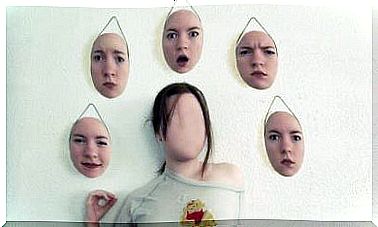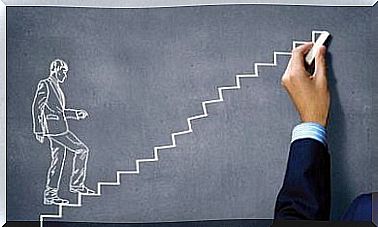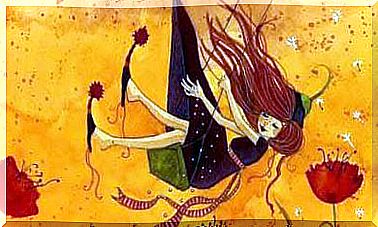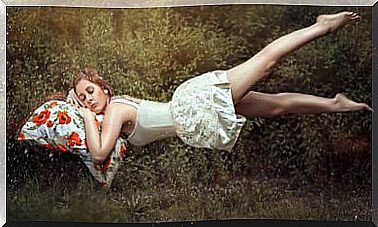The 6 Types Of Urban Art And Their Characteristics

The avant-garde was the movement of the 20th century that opened the door to a huge variety of artistic expressions that, today, are still on the rise. If you want to know the types of urban art that exist and their characteristics, we invite you to read the following article.
Like any type of movement, urban art admires everyday life, bets on the street and on free expression. Therefore, it has the support of a large part of the public, but also its disapproval by others.
In any case, to establish your own opinion about whether something is more or less liked, you have to be aware of it and later, you can argue why you think it is better or worse.
Urban or street art
The term “urban art” or “street art” appears to refer to all street art. This type of expression is made with a clear intention, as endorsed by the following study published in 2018 by the Complutense University of Madrid: open a communication channel with pedestrians in cities to send a message that breaks with the “politically correct ”.
In this way, it could be said that urban art (since postmodernity) fulfilled the purpose of the avant-garde: to get an art made by and for people, to send a free, ephemeral message that focused on the everyday.
Is street art the same as graffiti ?
It should be noted that graffiti is not the same as urban art. In fact, the first is classified within the movement, but both have some differences:
- Graffiti does not necessarily include a claiming message, but can have a purely artistic purpose.
- It is also from the 90s when street art begins to develop , and graffiti continues to evolve along its line since the 70s.
Thus, urban art receives different influences: graffiti by its means of expression (the street), avant-garde movements, postmodernity, illustration or graphic design.
The types of urban art and their characteristics
Let’s see below what are the different types of urban art.
1. Traditional
Its name is due to the fact that these were the first techniques used by the pioneers of urban art. Among them, the following stand out:
- Graffiti : the drawing or “traditional graffiti”, without the need for protest.
- Stencil : this method takes on special relevance in Paris, which consists of applying a stencil with a drawing to paint on top and leaving the silhouette on the surface.
- Sticker art : became popular thanks to the skate and punk rock bands of the 80s. It offers the possibility of sending a message cheaply and in a short period of time.
- Glue Posters : This special glue should be handled with gloves and protection to stretch large posters on the walls.

2. Abstract
These techniques are already moving away from traditional graffiti and are led by muralism. According to an article published by the Revista de las Artes , this artistic movement was started in Mexico at the beginning of the 20th century by a group of intellectual painters after the Mexican Revolution, the Great Depression and the First World War.
Artistic representation consists of intermingling a series of shapes to represent a creation that has an effect on the viewer (usually an optical illusion). In addition, the materials used are very diverse: oil, acrylic, tempera, etc.
3. Photographic
Images are vital for a message to remain recorded. In this sense, information is transmitted to the brain through sight, which remains, especially for those with good visual or photographic memory.
Among the techniques used in this class are:
- Gigantrographies : a photo is printed in collage that covers the entire street. It can be done in inkjet, laser or chemical development printing.
- Photographic miniatures : unlike the previous technique, these are smaller and serve to create mini-worlds in all their splendor. By means of a camera, an animation is created.
4. Morfing
This technique expresses the desire to transform the urban elements of the street into other things. In this sense, transformation and the endowment of life to inert things predominate. For example, a garage door would be used to create a manhole, or a watering tap to create the body of a child.
This category can also include interventions that are made from damage to the walls or stains, which look or resemble an object.
5. Facilities
The union of existing elements with new ones is taken advantage of so that together they take on a new meaning.
An example of this is the case of Raúl Zurita in “The Sea of Pain”, when he flooded a ship with water and painted the walls with his verses so that people could walk barefoot while they read them; so that the empathic journey of putting yourself in the shoes of the refugees who had lost their lives at sea would be easier.
It was his way of denouncing what happened, of trying to awaken our sensitivity, sometimes so anesthetized by the everyday and the outdated of today:
6. Exclusives
Finally, this would be the mixed bag where the other artistic expressions that, to this day, still do not have a specific catalog, would be included. In any case, it must be said that this art is also about that: that it is not classified because it is already free in itself.
Here are the techniques used with different materials and that are usually different from each other: from plastic wrap , sculptures, waste or garbage.

The types of urban art go beyond painting and paper
We hope that the 6 types of urban art and their characteristics have offered you a different look to leave prejudices behind. However, it is normal that you like it more or less because, simply, it is a different form of expression.
Today, it is building its strength with more and more new materials, elements and designs. Thus creating a proposal that goes beyond paper or painting, to establish a complaint and defend one’s own thinking.









